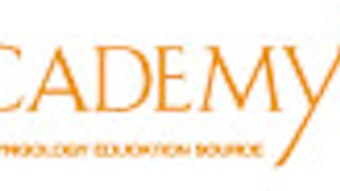Guidelines, Evidence, and Development
Evidence-Based Medicine and Guidelines You can’t open a journal these days without hearing about guidelines and evidence-based medicine. Many of the benefits of these are obvious: the ability to improve patient safety and quality, cost savings from standardization, and clear goals of care. While their application is dependent on the specific clinical situation faced by the individual patient and provider, hospital system adoption is critical to implementation. In addition, the use of guidelines provides practitioners with a clear opportunity to avoid the use of historical diagnostics and treatments that do not have proven effectiveness, thus reducing the need to practice defensive medicine. While the benefits of the guidelines are substantial, not everything has been rosy. The insurance industry has misinterpreted some of these guidelines and intervention from our Academy has been critical in getting indicated procedures covered by insurance. In addition, the local implementation of these guidelines is not always straightforward. A recent article in the journal Otolaryngology–Head & Neck Surgery by Lisa E. Ishii, MD, highlights the components of effective guideline implementation.1 She suggests that once there is buy-in to institution compliance with national guidelines, an ideal strategy should include leadership commitment with a stated expectation that all members of the organization should participate. Next, an education plan should be developed with dissemination via multiple educational methods and a systems plan should be developed with measurement tools to gauge success over time. Lastly, provider incentives should be put into place to align guideline utilization metrics with academic and financial reward systems. Goal-focused Practice Inherent in this last recommendation is the assumption that each of us has set time aside to create a personal set of goals that may or may not be in substantial alignment with institutional metrics. Like many other physicians, I spend much of my day bogged down in minutiae—focused on a consent form, a prescription, or a single patient phone call, and rarely take the opportunity to focus on the big picture. The sage advice of one of my colleagues, Christine G. Gourin, MD, was that I focus my planning on multiple goal windows: six weeks, six months, and six years. This would allow me to work on the to-do list, but still focus on long-term goals and set up interim targets to help me accomplish them.Just as we plan for synergy between individual and organizational goals, the Academy’s Board of Governors (BOG) is working to align our resources and energy toward those goals most important to its members. In order to accomplish this, the BOG wants to hear from you. Contact the Board of Governors Let us know what issues are important to you and might be appropriate for dissemination and feedback through our regional system. Let us know what topics you think should be next in guidelines development. Let us know if you are having legislative or socioeconomic issues in your states and hospital systems. Just like guideline implementation, the services of the Board can only be as good as the buy-in from its members and feedback to let us know how we can best focus our collective efforts.In addition, the BOG will be having its committee meetings/sessions in Vancouver, BC, Canada, beginning on Saturday, September 28, and will have our General Assembly meeting Monday afternoon, September 30. We invite broad participation and do not require participants to be appointed members or sit formally on a committee in order to attend and contribute. Please plan to contact your state society’s BOG governor, legislative representative, or public relations representative, or email us directly with suggestions at bog@entnet.org. We look forward to seeing you in Vancouver. Reference Ishii LE. Closing the Clinical Gap: Translating Best Practice Knowledge to Performance with Guidelines Implementation. Otolaryngol Head Neck Surg. 2013;148(6):898-901.
 Stacey L. Ishman, MD, MPHBOG Member-at-Large
Stacey L. Ishman, MD, MPHBOG Member-at-LargeEvidence-Based Medicine and Guidelines
You can’t open a journal these days without hearing about guidelines and evidence-based medicine. Many of the benefits of these are obvious: the ability to improve patient safety and quality, cost savings from standardization, and clear goals of care. While their application is dependent on the specific clinical situation faced by the individual patient and provider, hospital system adoption is critical to implementation. In addition, the use of guidelines provides practitioners with a clear opportunity to avoid the use of historical diagnostics and treatments that do not have proven effectiveness, thus reducing the need to practice defensive medicine.
While the benefits of the guidelines are substantial, not everything has been rosy. The insurance industry has misinterpreted some of these guidelines and intervention from our Academy has been critical in getting indicated procedures covered by insurance. In addition, the local implementation of these guidelines is not always straightforward. A recent article in the journal Otolaryngology–Head & Neck Surgery by Lisa E. Ishii, MD, highlights the components of effective guideline implementation.1 She suggests that once there is buy-in to institution compliance with national guidelines, an ideal strategy should include leadership commitment with a stated expectation that all members of the organization should participate. Next, an education plan should be developed with dissemination via multiple educational methods and a systems plan should be developed with measurement tools to gauge success over time. Lastly, provider incentives should be put into place to align guideline utilization metrics with academic and financial reward systems.
Let us know what issues are important to you and might be appropriate for dissemination and feedback through our regional system. Let us know what topics you think should be next in guidelines development. Let us know if you are having legislative or socioeconomic issues in your states and hospital systems. Just like guideline implementation, the services of the Board can only be as good as the buy-in from its members and feedback to let us know how we can best focus our collective efforts.In addition, the BOG will be having its committee meetings/sessions in Vancouver, BC, Canada, beginning on Saturday, September 28, and will have our General Assembly meeting Monday afternoon, September 30. We invite broad participation and do not require participants to be appointed members or sit formally on a committee in order to attend and contribute. Please plan to contact your state society’s BOG governor, legislative representative, or public relations representative, or email us directly with suggestions at bog@entnet.org. We look forward to seeing you in Vancouver.
- Ishii LE. Closing the Clinical Gap: Translating Best Practice Knowledge to Performance with Guidelines Implementation. Otolaryngol Head Neck Surg. 2013;148(6):898-901.
















